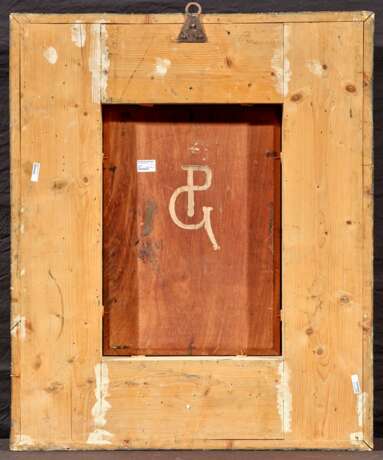Giovanni Piancastelli. Two Paintings. Double Portrait of Marcantiono V. Borghese and his Second Wife Therese de la Rochefoucauld
17.11.2023 15:00UTC +01:00
Classic
Sold
25500EUR € 25 500
| Auctioneer | VAN HAM Kunstauktionen GmbH |
|---|---|
| Event location | Germany, Köln |
| Buyer Premium | 32% |
Archive
The auction is completed. No bids can be placed anymore.

ID 1072465
Lot 1294 | Giovanni Piancastelli. Two Paintings. Double Portrait of Marcantiono V. Borghese and his Second Wife Therese de la Rochefoucauld
Estimate value
€ 30 000 – 60 000
Title: Two Paintings. Double Portrait of Marcantiono V. Borghese and his Second Wife Therese de la Rochefoucauld.
Technique: Each oil on wood.
Measurement: 55 x 39cm.
Frame: Framed.
Verso:
Monogrammed PG (lig.) on each of the plates.
Provenance:
Private ownership, Luxembourg, according to previous owners acquired from the Borghese family.
Cf. Literature:
S. De Santi, V. Donati, Giovanni Piancastelli. Artista e collezionista, Faenza 2001, p. 48-49, 134-135.
As if from nowhere, the heads of the couple Marcantonio V. Borghese and Therese de la Rochefoucauld emerge from the diffuse darkness into the light. The painter plays with the venerability of a Baroque portrait in the style of Rembrandt, but at the same time lacks any attributes that might indicate the aristocratic origins of the persons depicted. On the contrary: the prince's hair is wild and untamed, as it were lion-like, his nose is slanted in the face, his beard and eyebrows hang down like bizarre stalactite formations. His wife is different, her hair carefully arranged in a braided hairstyle. Giovanni Piancastelli immortalises the couple's physiognomy with unsparing directness. The impasto application of paint makes the deep wrinkles on the forehead and cheeks stand out so vividly that the face acquires a remarkable presence. The crystal-clear, profound eyes of the prince on one side and the worried look of his wife on the other underline this impression and testify to Piancastelli's impressive interest in a psychologising exploration of the sitter.
Blessed at a young age by a remarkable talent for drawing, Giovanni Piancastelli began his artistic training in 1860 at the Scuola di Disegno in Faenza and travelled to Rome in 1862. During his studies at the Accademia di San Luca, he studied with the important artist Francesco Podesti (1800-1895), among others. Initially he devoted himself to genre and landscape painting, before later turning to religious motifs and portraiture. In Rome, Piancastelli quickly became highly regarded in the closest circles of the aristocracy, both as an academic portrait painter and as an art advisor. He produced numerous portraits of the Roman aristocracy, such as the members of the Borghese, Ruffo della Scaletta, Torlonia, Gerini and Sacchetti families. Some of these paintings, which the artist probably kept out of affection, are still owned by his heirs, who donated some works to the Pinacoteca Nazionale di Bologna in 1927, including a portrait of Marcantonio Borghese and his wife Teresa. Piancastelli did not make one version of each portrait, but the sources count several. According to the current owner, the two works in question come directly from the Borghese collection, where they were acquired about two generations ago.
In 1871, Piancastelli was hired by Prince Marcantonio Borghese as an art advisor and drawing teacher for his children. From then on, the artist lived in Rome for no less than thirty-five years and also accompanied the family during holiday periods in the villas of Nettuno and Frascati. In 1886, after the death of Prince Marcantonio Borghese, he was entrusted with the task of reorganising the Borghese family collection in accordance with the entail commissions and moving it to the Villa Pinciana.
| Artist: | Giovanni Piancastelli (1845 - 1926) |
|---|---|
| Auction house category: | Paintings 19th Century |
| Artist: | Giovanni Piancastelli (1845 - 1926) |
|---|---|
| Auction house category: | Paintings 19th Century |
| Address of auction |
VAN HAM Kunstauktionen GmbH Hitzelerstr. 2 50968 Köln Germany | ||||||||||||||
|---|---|---|---|---|---|---|---|---|---|---|---|---|---|---|---|
| Preview |
| ||||||||||||||
| Phone | +49 221 92586215 | ||||||||||||||
| Fax | +49 221 92 58 62 4 | ||||||||||||||
| Buyer Premium | 32% | ||||||||||||||
| Conditions of purchase | Conditions of purchase | ||||||||||||||
| Business hours | Business hours
|








